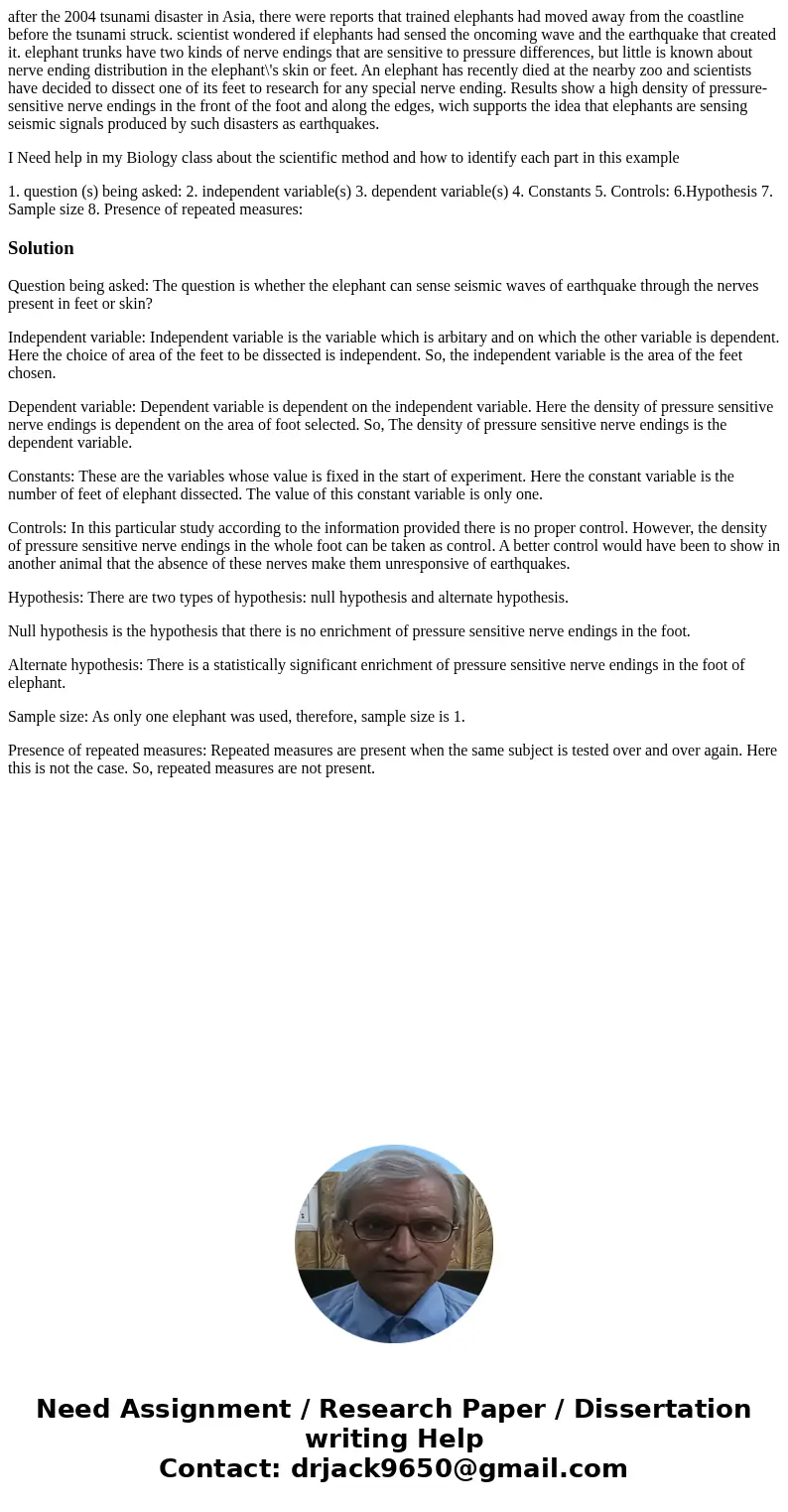after the 2004 tsunami disaster in Asia there were reports t
after the 2004 tsunami disaster in Asia, there were reports that trained elephants had moved away from the coastline before the tsunami struck. scientist wondered if elephants had sensed the oncoming wave and the earthquake that created it. elephant trunks have two kinds of nerve endings that are sensitive to pressure differences, but little is known about nerve ending distribution in the elephant\'s skin or feet. An elephant has recently died at the nearby zoo and scientists have decided to dissect one of its feet to research for any special nerve ending. Results show a high density of pressure-sensitive nerve endings in the front of the foot and along the edges, wich supports the idea that elephants are sensing seismic signals produced by such disasters as earthquakes.
I Need help in my Biology class about the scientific method and how to identify each part in this example
1. question (s) being asked: 2. independent variable(s) 3. dependent variable(s) 4. Constants 5. Controls: 6.Hypothesis 7. Sample size 8. Presence of repeated measures:
Solution
Question being asked: The question is whether the elephant can sense seismic waves of earthquake through the nerves present in feet or skin?
Independent variable: Independent variable is the variable which is arbitary and on which the other variable is dependent. Here the choice of area of the feet to be dissected is independent. So, the independent variable is the area of the feet chosen.
Dependent variable: Dependent variable is dependent on the independent variable. Here the density of pressure sensitive nerve endings is dependent on the area of foot selected. So, The density of pressure sensitive nerve endings is the dependent variable.
Constants: These are the variables whose value is fixed in the start of experiment. Here the constant variable is the number of feet of elephant dissected. The value of this constant variable is only one.
Controls: In this particular study according to the information provided there is no proper control. However, the density of pressure sensitive nerve endings in the whole foot can be taken as control. A better control would have been to show in another animal that the absence of these nerves make them unresponsive of earthquakes.
Hypothesis: There are two types of hypothesis: null hypothesis and alternate hypothesis.
Null hypothesis is the hypothesis that there is no enrichment of pressure sensitive nerve endings in the foot.
Alternate hypothesis: There is a statistically significant enrichment of pressure sensitive nerve endings in the foot of elephant.
Sample size: As only one elephant was used, therefore, sample size is 1.
Presence of repeated measures: Repeated measures are present when the same subject is tested over and over again. Here this is not the case. So, repeated measures are not present.

 Homework Sourse
Homework Sourse